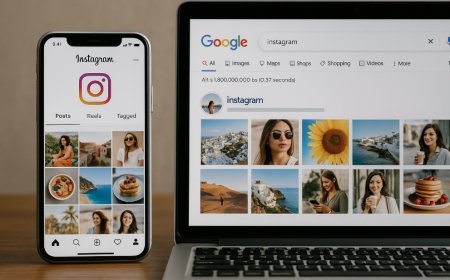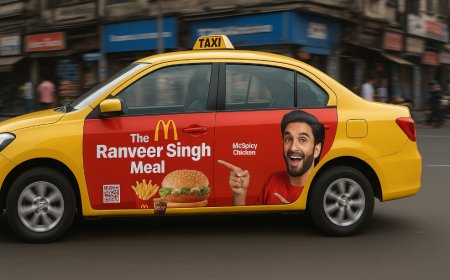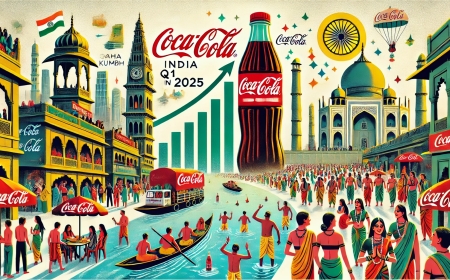When Personal Becomes Too Personal: The Hidden Cost of Hyper-Personalization for Brands
Is hyper-personalization pushing consumers away? Discover why brands need to rethink their approach to personal data and tailor experiences without compromising trust.

In the world of modern marketing, personalization has become the gold standard. From Netflix recommending the next show you’ll binge to e-commerce sites tailoring product listings just for you, brands today are expected to know their consumers better than ever.
But as companies strive to make every interaction feel tailor-made, a new challenge is emerging: Can brands go too far? Can too much personalization feel intrusive—maybe even creepy?
The answer is yes. And it's prompting brands to rethink their personalization strategies before they lose something far more valuable than a sale: consumer trust.
The Rise of Hyper-Personalization
Hyper-personalization takes traditional personalization a step further. It uses real-time data, AI, predictive analytics, and behavioral insights to customize user experiences down to minute details—product suggestions, ad placements, subject lines, and even website design layouts.
Marketers love it. Executives support it. And data-driven platforms make it easy.
But the real question is—do customers actually want it?
When Convenience Crosses the Line
There’s a fine line between personalization and surveillance. While most consumers appreciate relevant recommendations and streamlined experiences, things begin to feel uncomfortable when:
-
Ads appear moments after a private conversation
-
Emails reference items only browsed once
-
Apps start suggesting life changes before the user even expresses a need
This level of hyper-awareness can lead to what’s been dubbed the “creep factor.” Consumers begin to wonder: How much do they know about me? And what are they doing with my data?
That discomfort can result in brand disengagement, or worse, loss of long-term loyalty.
The Trust-Personalization Paradox
Here’s the paradox: Consumers want relevance, but not at the cost of their privacy. They value tailored experiences, but not if it feels like a brand is peering into their lives uninvited.
According to global research surveys:
-
Over 70% of consumers appreciate personalization
-
Yet over 60% are concerned about how companies use their personal data
-
A large majority believe that brands often don’t explain clearly how personalization works
The gap between expectation and execution has left many users skeptical—even resentful—of brands that “know too much.”
Where Hyper-Personalization Can Backfire
1. Lack of Transparency
Many companies fail to disclose what data is being collected, how it's used, and whether it’s shared with third parties. This erodes trust and invites backlash.
2. Over-reliance on Automation
AI-powered personalization can miss important nuances. A customer looking for maternity wear for a friend may not want baby product ads for the next six months.
3. Ignoring Consent and Boundaries
When personalization feels intrusive—especially when it’s not opt-in—consumers start questioning whether their data is being used ethically.
4. Inaccuracy Leading to Irrelevance
Ironically, over-targeting can sometimes miss the mark, creating assumptions about preferences that feel off-base or annoying.
Building Trust in the Era of Data-Driven Marketing
If brands want to continue leveraging hyper-personalization without risking customer loyalty, they must anchor every tactic in transparency and control.
Here’s how:
Give Consumers Control
Let users set their personalization preferences. Provide clear settings where they can manage how much data is collected and how it’s used.
Be Transparent and Honest
Don’t bury your data policies. Offer real, plain-language explanations for how personalization works.
Prioritize Value Over Volume
Just because you can personalize doesn’t mean you always should. Focus on high-impact, value-driven personalization—not every possible interaction.
Ensure Security and Data Ethics
Make it a priority to not only secure consumer data but also to handle it ethically. That means avoiding unnecessary data hoarding and respecting boundaries.
Balance Automation with Human Oversight
Personalization powered by AI still needs a human touch. A well-designed journey feels personal—not robotic.
Personalization That Builds Loyalty, Not Suspicion
The brands that will thrive in the coming years are the ones that balance smart technology with empathetic, ethical marketing practices. They understand that trust is the currency of the digital age—and that excessive personalization can devalue it if not handled with care.
Consumers don’t want to feel like products. They want to be respected as people. That starts by seeing personalization not as a weapon to sell more, but as a tool to serve better.
Conclusion: Keep It Personal, Not Intrusive
Personalization is not the problem—it’s how it’s done. The goal should always be to create meaningful connections, not manipulate behaviors. If hyper-personalization leads to discomfort or distrust, then the strategy needs rethinking.
What's Your Reaction?
 Like
0
Like
0
 Dislike
0
Dislike
0
 Love
0
Love
0
 Funny
0
Funny
0
 Angry
0
Angry
0
 Sad
0
Sad
0
 Wow
0
Wow
0












































